Classes VS Competing
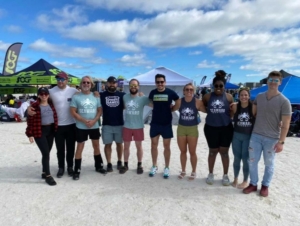 As of recently there is an increasing number of our members who are seeking to take their skills to the next level and compete against other CrossFit athletes. In order to keep our culture intact and preserve what makes Seaward feel the way it does, it is a perfect time to think about how to achieve individual fitness goals within a group setting.
As of recently there is an increasing number of our members who are seeking to take their skills to the next level and compete against other CrossFit athletes. In order to keep our culture intact and preserve what makes Seaward feel the way it does, it is a perfect time to think about how to achieve individual fitness goals within a group setting.
What makes CrossFit unique is also the very thing that can be frustrating for many people: due to the varying movements such as weightlifting, gymnastics, and cardio – there is bound to be a skill that comes more naturally for some and more challenging for others. Learning how to navigate through the ups and downs of this sport can feel like an uphill battle but it’s all about your mindset.
For anyone who has been doing this for a year, you will probably get to a point where you are tired of not being able to do ‘x’. If you only attend 1-3 times a week then it is less likely that you will see the results you are looking for. Consider changing to “If you instead come to classes 5-6 times per week and spend time before or after class working on movements that challenge you, there is a greater chance that you will cycle through movements and eventually develop the strength and technique to achieve your goals. However, only coming to class might not get you to where you want to be in the time you desire.
The next few points are focused on what it takes to move the needle.
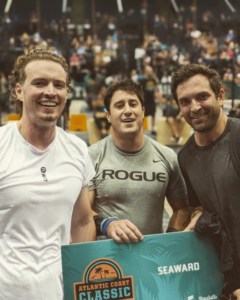 How do we navigate growth for ourselves?
How do we navigate growth for ourselves?
This will look different for everyone, and timelines are different. A skill that might take one person 3 months to achieve could take another a year or more. This depends on the individual’s
movement history, natural ability, lifestyle and work ethic. Being realistic will serve you better in the long run which brings me to my next point, how much time do you have?
How we spend our time reflects our goals
Putting in the time sucks because we are wired to love instant gratification. Living in 2022 we can Uber ice cream sundaes to our front door. Learning how to carve out space to work on a skill takes practice. Starting small is more realistic and effective. Maybe you want to get double unders? Spending 5-10 minutes after class practicing (or whipping the crap out of yourself) will get you there. Only practicing double unders in a WOD a couple times a month will take you way longer.
Classes are a time to test out what you have been refining. Doing the ‘homework’ matters. What are you willing to do to achieve your goal?
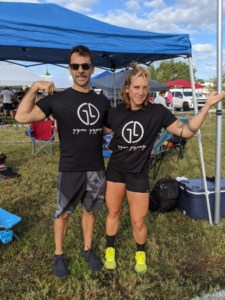 Mindset
Mindset
This is a tough one because it is very easy to make excuses… (myself included). There are some skills that I “should” have already, but I haven’t invested the time due to my personal circumstances. However, my growth has been different than someone else’s. I started CrossFit with an injury, a lot of imbalances and I was a new mom who was juggling everyday life, work and family dynamics. For me, my problem areas were weightlifting, gymnastics, running, double unders, rowing… Basically it felt like EVERYTHING.
Instead of overwhelming my mind I picked two days a week when I focused on my weakness. Due to my injury and movement history I had to do a lot of work on my posterior chain and core. My coach, Hannah Douglass, put me onto Active Life RX. Before or after class I would spend 30 minutes doing accessory ‘unsexy stuff’, gymnastic skill work or barbell drills. It is important to build a strong foundation. Just like with weights, you start lighter, drill the technique BEFORE you load up (or at least that is the theory). Gymnastics is a bit more confronting because your body is essentially the ‘equipment’. If you can’t do the fundamentals there is no way to really cheat around it.
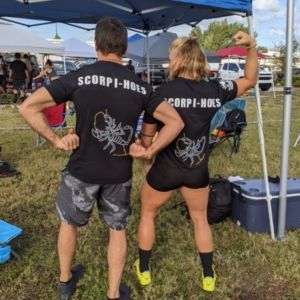 Having the right mechanics will go a long, long way. If something up or down the chain isn’t functioning correctly – the rest of the body can’t move as efficiently. You can see this with people who have mobility limitations. Sure, they can lift weight to a certain point but somewhere down the line they will hit a roadblock or develop more pain in other areas. This is why it is important to break down the movement and investigate if it is a flexibility, mobility or strength issue. Flexibility and mobility are not the same. Flexibility is passive and mobility is active.
Having the right mechanics will go a long, long way. If something up or down the chain isn’t functioning correctly – the rest of the body can’t move as efficiently. You can see this with people who have mobility limitations. Sure, they can lift weight to a certain point but somewhere down the line they will hit a roadblock or develop more pain in other areas. This is why it is important to break down the movement and investigate if it is a flexibility, mobility or strength issue. Flexibility and mobility are not the same. Flexibility is passive and mobility is active.
How to get better at toes-to-bar isn’t just rocking up and 50 toes to bar after every class. If the lats, shoulder muscles, midline and hip flexors aren’t strong enough (or tight) – there are better ways to build (or open) those up. Andddd check in with your hamstrings, are those suckers tight? If so, that is going to make it a lot harder to get those 10 little piggies up to the bar. Once you dissect a movement we can get a better idea as to how you should attack your pain points.
After your technique is dialed in, THEN you can increase volume/load.
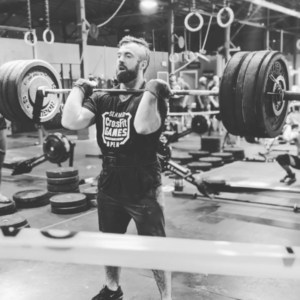 Attack your weaknesses
Attack your weaknesses
There are SO MANY specialized programs out there to help you overcome gymnastics or lifting obstacles. We have had a few members see the gains with Performance Plus Programming. There have been people who have enjoyed WODPrep or Burgener Strength, Or if it is for mobility there is GOWOD, ROMWOD or The Ready State. Of course, you can always book a private session with a coach and come up with a plan. We have skill workshops several times throughout the year and these are always a great way to explore progressions.
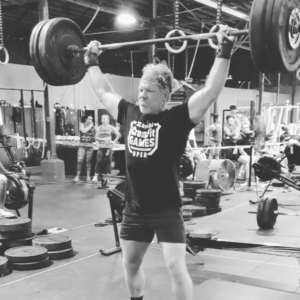 Keeping it REAL
Keeping it REAL
Work ethic and time are in a relationship. Maybe it’s ‘complicated’ (haha) but being honest with your time AND the ability to put in the ‘work’ will help you in the long run. When we put unrealistic expectations on ourselves and bite off more than we can chew, we are more likely to not succeed. It is far better to set micro goals, break them down into smaller, realistic goals. I am not saying that someone who works a full-time job and works out 1 hour a day will never become an elite athlete but again, these elite athletes have a long history, lots of hours invested, private programming and probably not the life stress or responsibilities that the common person has. Trust me, sometimes I wake up wondering why I am not ripped like Tia-Clair Toomey but then I remember that the night before I ate peanut butter cups and had 5 hours of sleep. Meh. However, tomorrow is another day. I am stronger and more fit than I was last year because I keep trying.
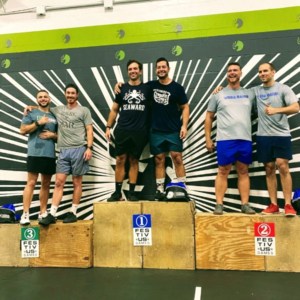 Be kind to yourself
Be kind to yourself
Celebrating the little wins will keep you motivated. There will be a day when you look back and remember when you couldn’t do ‘x’. Be humble and don’t lose your perspective. Take a moment to reflect on what you HAVE accomplished so far instead of the giant list of wants.
So you want to compete!?
Competing is a GREAT way to test out all your hard work you put inside and outside of class. There are competitions that always have scaled divisions. Festivus is a competition strictly geared towards beginners and intermediate (no hardcore athletes). The CrossFit Open is another place to test your fitness in the safety of your own home gym.
To grow as a competitive athlete from Scaled > Intermediate > RX > Elite, requires refining of the following bullet points:
- Strength / Technique
- Gymnastic Skills/ Endurance
- Engine – capacity to push through high-intensity workouts
- Mental Grit
- Nutrition – “You can’t out train a bad diet”
- Sleep
- Recovery Hygiene
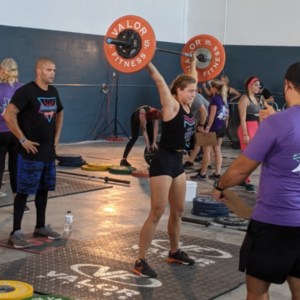 If any of the above bullets are obstacles for you, I strongly advise focusing on those because no amount of comp training is going to magically fix the problem areas. Comp training is a place to test out the hard work you do in the dark. It doesn’t mean that everyday is perfect or that you won’t have an off week. Part of being a competitive, mature athlete is understanding the ebbs and flows.
If any of the above bullets are obstacles for you, I strongly advise focusing on those because no amount of comp training is going to magically fix the problem areas. Comp training is a place to test out the hard work you do in the dark. It doesn’t mean that everyday is perfect or that you won’t have an off week. Part of being a competitive, mature athlete is understanding the ebbs and flows.







